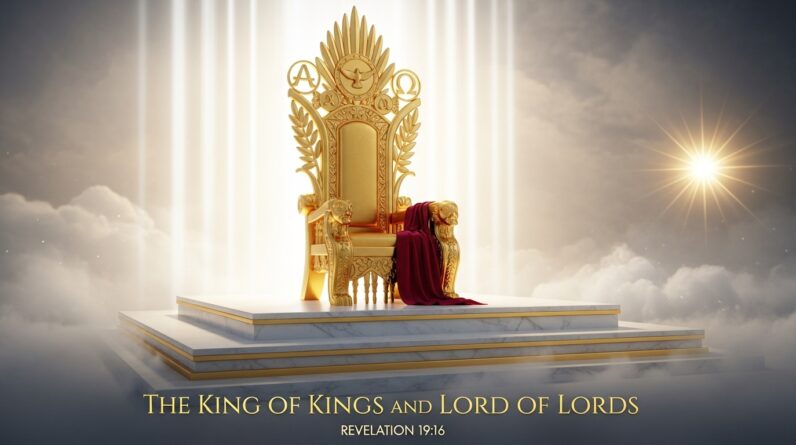John 10:10 is a verse from the New Testament of the Bible, specifically from the Gospel of John. In the New International Version (NIV), the verse reads:
“The thief comes only to steal and kill and destroy; I have come that they may have life, and have it to the full.”
This verse is attributed to Jesus, and it highlights the contrasting purposes of Jesus and those who oppose him. Jesus is portrayed as the bringer of abundant life, while the thief represents negative forces seeking to steal, kill, and destroy.
To gain a deeper understanding of John 10:10, we may want to ask ourselves and explore the following questions:

Who is the audience, and what is the setting?
The audience includes Pharisees and Jews engaged in a debate with Jesus about his identity and authority. The setting is likely in Jerusalem during the Feast of Dedication, also known as Hanukkah, as mentioned in John 10:22. This festival, commemorating the rededication of the Temple, provides a backdrop for Jesus’ claims about being the Shepherd and the Gate.
Interpretation Questions:
What does it symbolize?
The “thief” in John 10:10 symbolizes the forces of evil, sin, and ultimately, Satan. It represents everything that opposes God’s plan for abundant life and seeks to harm and destroy. The thief is a metaphor for the spiritual enemies that work against God’s goodness.
Reference Bible Verses:
Ephesians 6:12 “For our struggle is not against flesh and blood, but against the rulers, against the authorities, against the powers of this dark world and against the spiritual forces of evil in the heavenly realms.”
What does it mean for the thief to “steal, kill, and destroy”?
The actions of stealing, killing, and destroying encompass the destructive consequences of sin and the work of the enemy. The thief seeks to steal joy, peace, and the blessings of life. It aims to bring spiritual death and separation from God, ultimately leading to the destruction of one’s spiritual well-being.
Reference Verses:
John 8:44 – “You belong to your father, the devil, and you want to carry out your father’s desires. He was a murderer from the beginning, not holding to the truth, for there is no truth in him.”
How does Jesus counteract the actions of the thief?
Jesus counteracts the actions of the thief through His sacrificial death on the cross and subsequent resurrection. By offering Himself as the Good Shepherd who lays down His life for the sheep, Jesus provides redemption, forgiveness of sins, and eternal life. Through His victory over death, Jesus overcomes the thief’s power and offers abundant life to those who follow Him.
Reference Verses:
John 10:11 – “I am the good shepherd. The good shepherd lays down his life for the sheep.”
Colossians 2:15 – “And having disarmed the powers and authorities, he made a public spectacle of them, triumphing over them by the cross.”
What is meant by having “life to the full” or “abundant life”?
Having “life to the full” or “abundant life” extends beyond mere existence. It involves a life rich in meaning, purpose, and spiritual fulfillment. Abundant life encompasses the blessings of a restored relationship with God, experiencing His love, grace, and the transformative power of following Jesus. It is a life characterized by the fullness of God’s presence and the joy that comes from living in alignment with His will.
Reference Verses:
John 10:10 – “The thief comes only to steal and kill and destroy; I have come that they may have life, and have it to the full.”
John 14:6 – “Jesus answered, ‘I am the way and the truth and the life.'”
Historical Questions:
Historical and Cultural Factors:
Consideration of the historical and cultural context helps illuminate the original audience’s understanding of John 10:10. The Jewish audience, particularly during the Feast of Dedication (Hanukkah) in Jerusalem, would have been familiar with the imagery of shepherds and sheep from their religious traditions. The festival itself celebrated the rededication of the Temple after its defilement, signifying renewal and restoration. Jesus, using this context, would have resonated with the audience by presenting Himself as the true Shepherd, bringing spiritual renewal and protection.
Reference Verse:
John 10:22 – “Then came the Festival of Dedication at Jerusalem. It was winter, and Jesus was in the temple courts walking in Solomon’s Colonnade.”
How Different Theologians Throughout History Have Interpreted This Verse:
Throughout history, theologians have provided various interpretations of John 10:10, enriching our understanding of its theological depth.
- Augustine (354–430 AD): Augustine emphasized the battle between good and evil, viewing the thief as the devil and the abundance of life as the spiritual blessings provided by Christ.
- Thomas Aquinas (1225–1274): Aquinas highlighted the redemptive aspect of Christ’s actions, seeing the thief as representing sin and death, and Christ as the Good Shepherd bringing salvation.
- John Calvin (1509–1564): Calvin emphasized the contrast between the destructive work of the thief and the life-giving work of Christ. He underscored the role of God’s grace in bringing about abundant life.
- Martin Luther (1483–1546): Luther focused on the idea of justification by faith, seeing Christ’s work as delivering believers from the condemning power of sin and death.
- Contemporary Theologians: More recent theologians have explored the social and economic dimensions of the thief’s actions, addressing systemic injustices and oppressive structures that steal, kill, and destroy in society.
Reference Theological Works:
- Augustine’s “City of God”
- Thomas Aquinas’ “Summa Theologica”
- John Calvin’s “Institutes of the Christian Religion”
- Martin Luther’s “Commentary on Galatians”
- Works of contemporary theologians addressing social justice issues.

Comparative Questions:
Are there similar themes or messages in other parts of the Bible?
Examining other parts of the Bible reveals similar themes that resonate with John 10:10. Throughout both the Old and New Testaments, God’s promise of protection, guidance, and abundant life for those who follow Him is consistently emphasized. Verses such as Psalm 23, which portrays God as a Shepherd, share a parallel theme with John 10:10, reinforcing the idea of God’s care and provision for His people.
Reference Verse:
Psalm 23:1 – “The Lord is my shepherd, I lack nothing.”
How does this verse align with the teachings of Jesus in other Gospels?
Jesus’ teachings on abundant life and the role of the Shepherd are not confined to the Gospel of John. In the synoptic Gospels (Matthew, Mark, and Luke), Jesus often uses parables and metaphors to convey similar messages about God’s care and the transformative power of following Him. For example, the parable of the Lost Sheep in Luke 15:4-7 emphasizes the joy in heaven over one sinner who repents, reflecting the idea of a Shepherd seeking and saving the lost.
Reference Verse:
Luke 15:4 – “Suppose one of you has a hundred sheep and loses one of them. Doesn’t he leave the ninety-nine in the open country and go after the lost sheep until he finds it?”
Old Testament References:
The imagery of a shepherd caring for his flock has deep roots in the Old Testament, particularly in passages like Ezekiel 34. This chapter portrays God as the Shepherd who seeks out and cares for His people. Understanding these Old Testament references enhances the meaning of John 10:10, emphasizing the continuity of God’s character and plan throughout biblical history.
Reference Verse:
Ezekiel 34:15-16 – “I myself will tend my sheep and have them lie down, declares the Sovereign Lord. I will search for the lost and bring back the strays. I will bind up the injured and strengthen the weak.”







